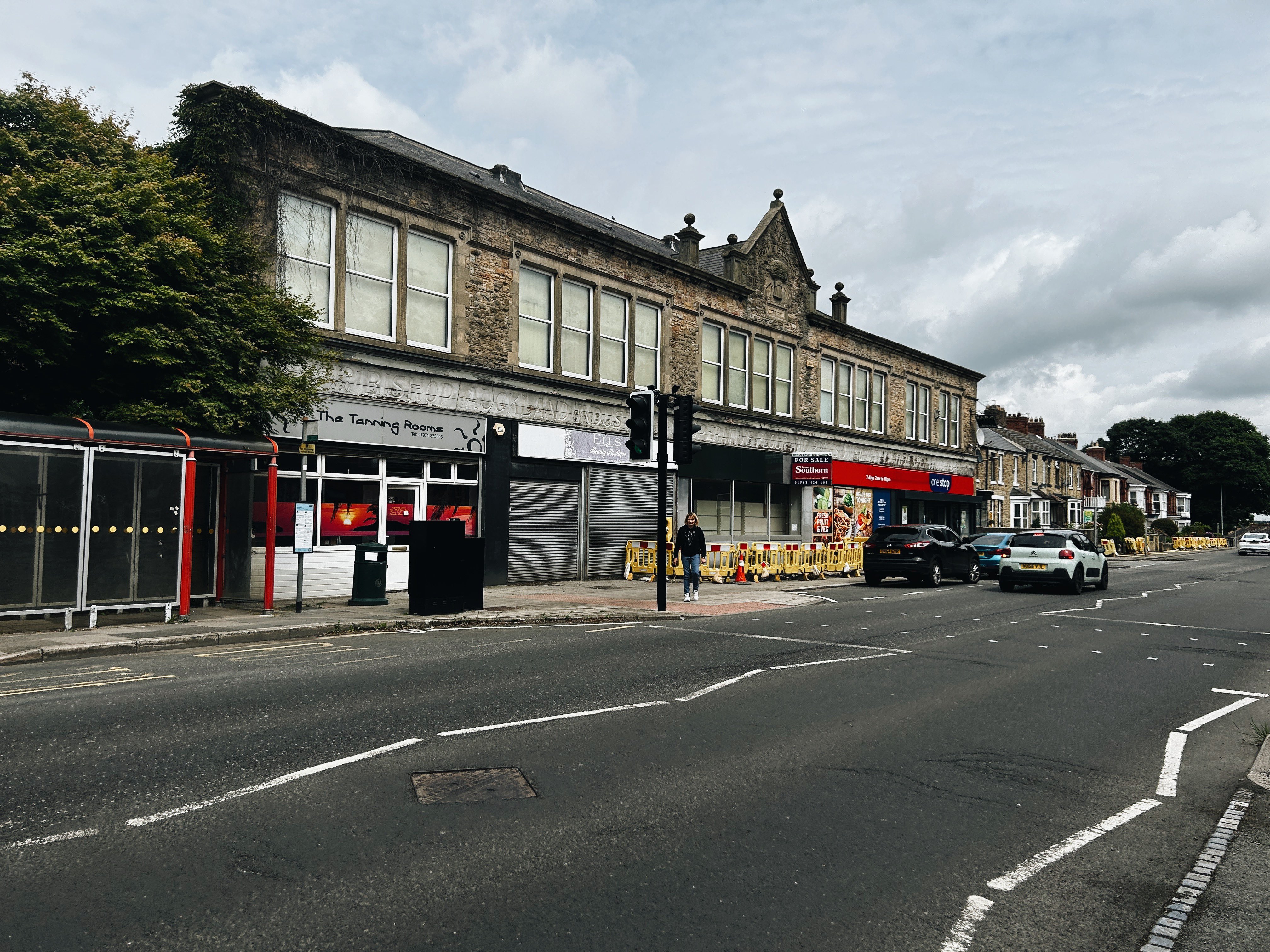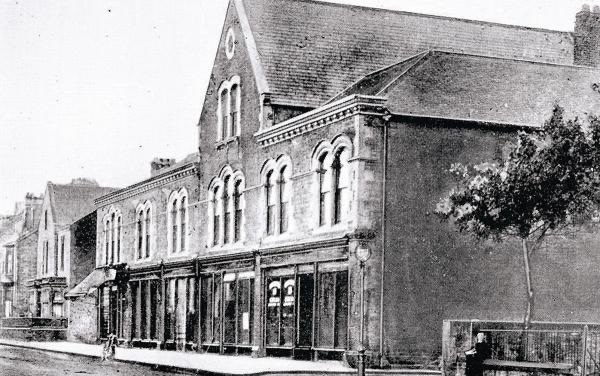
Spennymoor
Bishop Auckland Industrial Co-Operative, Spennymoor Branch
Last Updated:
3 Oct 2024
Spennymoor
This is a
Co-Operative
54.694807, -1.610596
Founded in
Current status is
Extant
Designer (if known):

Now separate commercial units
I was blown away by the Spennymoor branch of the Bishop Auckland Co-Operative. What a beautiful building, complete with the Wheatsheaf motif above the first floor windows.
The local Cooperative have a long and illustrious history in the town. The Bishop Auckland Industrial Co-operative Flour and Provision Society started trading here in 1872, with a branch at Tudhoe Grange (3rd pic). This was just 12 years after their establishment in 1860. Their original aim was to provide affordable provision - basic goods and staples as the name suggests. Like the modern Co-Op the public were shareholders and all benefitted from its success. Spennymoor was ideal - a whole string of industries blossomed and its boundaries kept expanding to keep up with labour demand.
This site was bought from the Shafto’s in 1876 after an incredibly profitable 4 years. It originally featured a grocer and drapery department, but was soon expanded 6 years later.
They were the department stores of their day, and it’ll probably remind you of the Annfield Plain branch at Beamish. There’ll have been a bakers, maybe a cobblers or butchers too.
It only took 3 months for it to burn down entirely. It took place at 11:50pm the night of 27th April 1882. Horses stabled in the rear had fled and the blaze required fire engines from the Tudhoe Iron Works alongside the local fire brigade, though apparently look a while given little chance for its survival.
It took 15 years for it to reach the scale it did prior, which is what we see on the 4th pic. Paid for by a long insurance claim, the new premises also featured a slaughterhouse for a butchers. By 1922 it was, yes, struck again by fire. In November 1922 the 3 storey building, then with 5 seperate departments. It was spotted by a young boy, but again by the time the local fire brigade arrived it already did considerable damage. The roof of the grocers fell in and the embers threatened the neighbouring dwellings. The cost of the stock lost was estimated to have been between £70,000 and £80,000.
It underwent another renovation and part rebuild, which leaves us with this pure example of an industrial northern cooperative - luckily still trading through divided into separate units. It's remarkable it exists given the turbulent and unlucky history.
Let us hope it one day gets listed!
Listing Description (if available)


We're now going to peel back the layers of history, starting from the current building to how it appeared in the 1890s. The Ordnance Survey published in 1946 depicts the current structure with surroundings not too dissimilar today. The considerable chance is the addition of the road network and secondary school at the bottom of the town. The High Street still retains many of its original features, though the dog racing track on Victoria Street is no longer. There was also another playing field and pavilion (now Middlestone Moor School) and a cricket ground which has now been closed for housing.
It was a considerable couple of decades, as looking back to the 1910s very little apart from the High Street is developed in this part of the town. It was still dominated by farmland beyond the main road as well as allotments, though it appears encroachment was starting. The Cooperative branch was a smaller unit, not covering the whole plot but still considerable.

Again, we go back to the 1890s and find a reasonable degree of change. Repurposed back into farmland thereafter we find Merrington Lane's racecourse - for horses (https://www.northeastheritagelibrary.co.uk/sports-archive/sp01/merrington-lane%2C-racecourse) which closed in the 1900s.

The branch in July 2024

The Wheatsheaf motif, along the their motto 'Unity is Strength', emblazoned in the centre of the unit. The ghost sign is also extant.

The branch before the fire in the 1900s or 1910s. Source: Northern Echo
